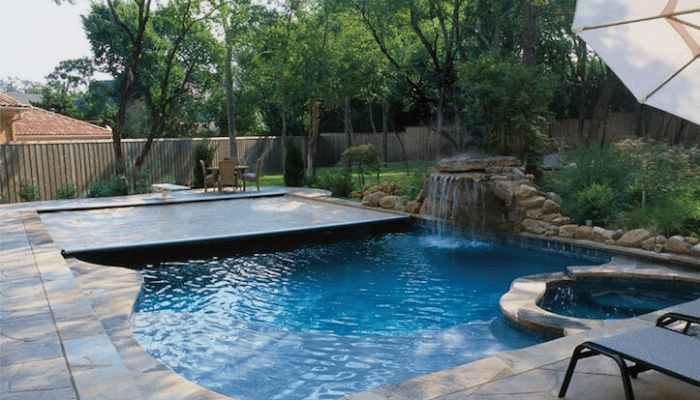Key Takeaways
A pool cover isn’t just a nice extra. It’s essential for cutting evaporation, keeping water clean, and lowering heating and chemical costs.
Different types serve different needs: solar covers save heat and water, safety and winter covers protect and block debris, while automatic or slatted covers offer premium convenience and insulation.
Choose based on pool size, how often you swim, safety requirements, and budget. There’s no one‑size‑fits‑all solution.
Proper installation and regular cleaning or storage extend a cover’s lifespan, saving you money and effort long term.
Whether basic or high‑end, the right cover quickly pays for itself by protecting your pool, reducing maintenance, and giving you more time to enjoy it.
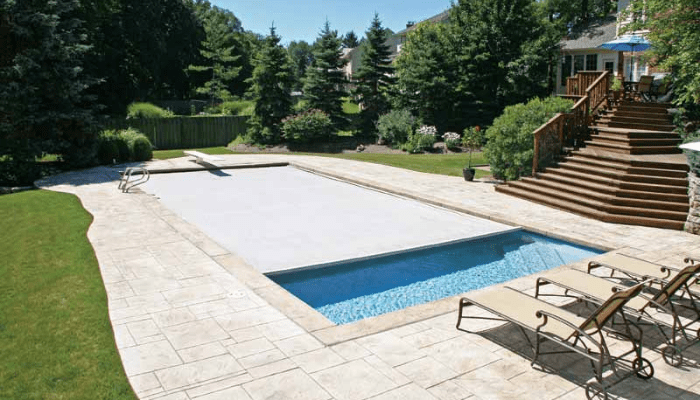
An uncovered pool can lose up to 5,000 liters of water a month through evaporation. That’s not just water, that’s your time, energy, and money floating away under the sun.
And let’s be honest: skimming out leaves every other day? Gets old real fast.
Whether your pool is a sleek showpiece or a backyard splash zone, it deserves better than being left exposed to the elements. The right swimming pool covers aren’t just about aesthetics (though, yes, it can look sharp). They’re about safety. Heat retention. Cleaner water. Lower bills. Fewer frogs doing cannonballs at 2 a.m.
But with dozens of options: solar, safety, slatted, retractable, it can get overwhelming. That’s where this guide steps in.
We’ll break down exactly what type of swimming pool cover fits your needs, how to install it like a pro, and why it’s one of the smartest upgrades you can make to your outdoor space. Whether you’re a first-time pool owner or a seasoned swim-season vet, you’ll walk away knowing exactly what to buy, and why.
Let’s cover this properly. Pun 100% intended.
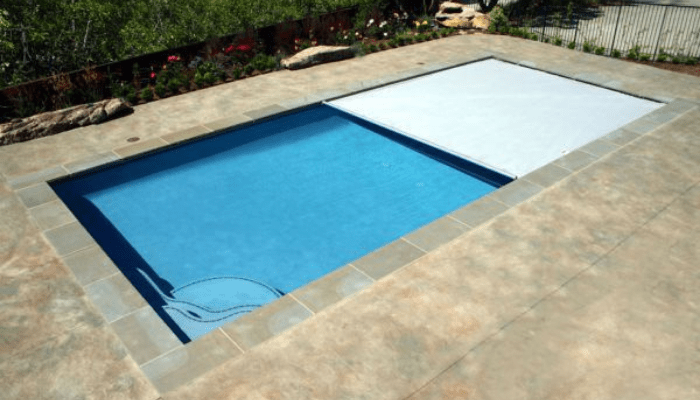
Why You Need a Cover for Your Swimming Pool
Let’s start with the obvious: your pool is constantly at war with the environment. Wind, sun, bugs, leaves, pollen, bird “deposits”, it all ends up in the water unless you intervene.
A pool cover isn’t just a nice-to-have. It’s your first line of defense. It prevents evaporation, cuts down heating costs, and keeps your water chemistry from turning into a science experiment. Some covers even help reduce chemical use by up to 60%.
And yes, it also stops squirrels from treating your pool like a jungle gym.
More importantly, safety. If you have kids, pets, or visiting guests, a proper cover can literally save lives. The peace of mind alone is worth it.
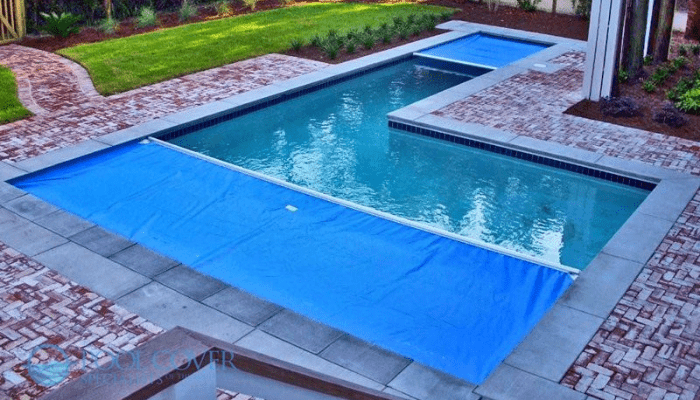
Types of Swimming Pool Covers
There’s no one-size-fits-all here. Your climate, lifestyle, and budget all play a role in the best option for you. Let’s break down the main types so you don’t end up buying a glorified tarp.
Solar Pool Covers
Also known as solar blankets, these are the lightweight, bubble-wrap-looking sheets that float on the surface.
They do a few things really well:
- Trap heat and reduce overnight temperature drops
- Minimize evaporation
- Keep out light debris like dust and bugs
They’re not ideal for heavy leaf fall or safety, but they’ll pay for themselves in heating costs alone.
Safety Pool Covers
These are the heavy-duty ones, either solid vinyl or mesh secured tightly around the pool’s edge.
They’re built to hold weight. Which means yes, a child or pet could walk across it without falling in. (Please don’t test this.)
Safety covers also block sunlight, which helps prevent algae growth during off-season months. Perfect for people who winterize their pool or want top-level protection year-round.
Automatic Pool Covers
Push a button. The cover slides open or closed.
It’s that simple, and that slick.
These are often custom-fit to your pool and built into the design, making them practically invisible when not in use. They’re more expensive, yes, but offer the ultimate combo of safety, convenience, and energy efficiency.
Great if you use your pool often and don’t want to wrestle with covers every day.
Winter Pool Covers
Think of these like seasonal armor.
They’re made for long-term coverage, usually heavier, often tied down with water bags or anchors. Perfect for when your pool’s not in use for months at a time.
If your winters are snowy, icy, or leaf-filled, this is your pick. Just don’t forget to clean the cover off before spring or you’ll end up with a second, murky pool on top of the first.
Slatted or Retractable Covers
These are premium options, often made from rigid slats of PVC or polycarbonate that roll open or closed, either manually or with a motor.
They’re sleek, modern, and highly effective at insulation. Great for energy-conscious homeowners or those with designer pools who want function and aesthetics.
They’re also great at keeping out debris, and, if you get a walkable model, offer some safety too.
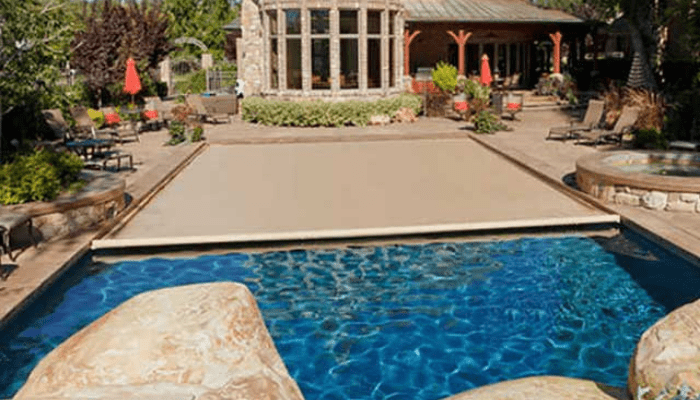
How to Choose the Right Swimming Pool Cover
Feeling a bit cover-confused? Here’s how to cut through the noise.
1. Consider your pool type and size
Custom-shaped or extra-large pools may limit your options. Automatic and slatted covers are great for tricky shapes, while standard sizes often fit round or rectangular pools easily.
2. Think about how often you use your pool
Use it daily? Go with automatic or solar. Seasonal swimmer? Winter or safety covers are your friend.
3. Do you need safety features?
If there are kids or animals in the picture, don’t skimp here. Get a cover that’s rated for weight and lockable.
4. What’s your budget?
Solar covers are the most affordable. Safety covers land in the middle. Automatic and slatted covers are the luxury end of the pool cover spectrum.
5. How much maintenance are you willing to do?
Some covers require scrubbing, folding, storing, and securing. Others do the job quietly in the background. Pick your level of effort, and be honest with yourself.
Want a cheat sheet? If you want affordability and heat retention: solar. For safety and seasonal protection: safety or winter. For convenience and curb appeal: automatic or slatted.
Installation Tips for Swimming Pool Covers
This isn’t IKEA furniture. But it’s also not rocket science, if you follow the right steps.
For manual covers:
- Measure twice, cut once. If it’s a DIY job, make sure you’re not eyeballing dimensions.
- Use weighted edges or anchor points to keep the cover in place, especially in windy areas.
- Don’t leave slack, it invites debris and creates safety risks.
For automatic or retractable covers:
- Go with a professional. Installation requires precision and sometimes permanent structural changes to the pool deck.
- Ensure there’s a reliable power source nearby.
- Ask about maintenance before they leave. These systems require periodic servicing to keep things running smoothly.
Whichever route you go, keep a cover pump or squeegee handy, water and leaves love to pool on top of your… well, pool cover.
Maintenance and Storage of Pool Covers
Covers need care too. Ignore them, and they’ll crack, tear, or sag faster than you think.
Here’s how to keep yours in top shape:
- Clean regularly – Use mild soap and a soft brush. Hose it down. Don’t let algae or mold build up.
- Dry before storing – If you roll it up wet, you’re basically creating a mildew burrito.
- Store it off the ground – Hang it or place it on a rack. Keeps it dry, clean, and rodent-free.
- Inspect for damage – Look for tears, holes, frayed edges, or worn straps. Patch them up before the problem spreads.
Plan to replace most covers every 3-7 years depending on the material and how well you care for it. Think of it like tires: you wouldn’t drive on bald ones, so don’t leave your pool exposed with a damaged cover.
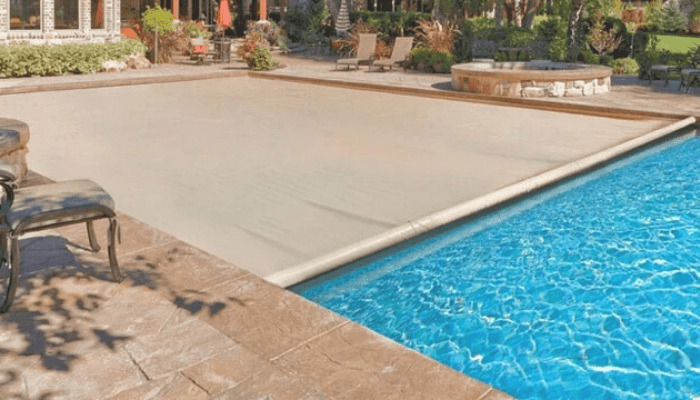
Where to Buy the Best Swimming Pool Covers
Online retailers have the variety and convenience, plus reviews, which can be brutally honest (and super helpful). Amazon, PoolSupplies.com, and manufacturer-direct stores like PoolGuard or Rollo Solar offer everything from budget basics to high-end builds.
But local pool supply shops? Still gold. You get hands-on help, advice from people who’ve actually installed covers, and sometimes even installation packages.
If you’re going custom or need an automatic system, go with a brand that offers consultation and professional install, this is not the time to guess your pool’s measurements or assume all rectangles are the same.
Set a budget, decide what features matter most, and match those up with your pool type. It’s not glamorous shopping, but it’s worth every penny the next time a storm rolls in or your pool stays warm overnight without your heater doing overtime.
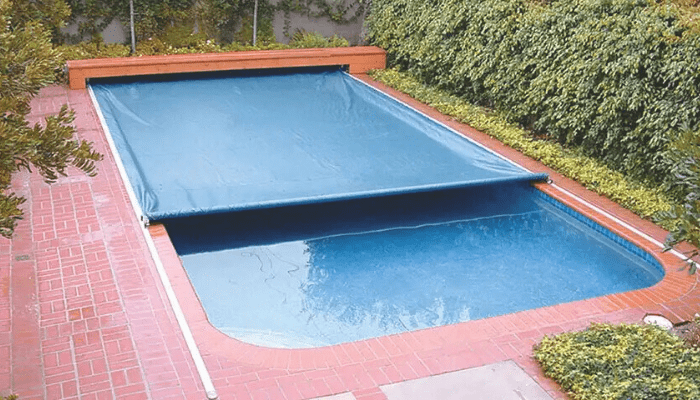
Conclusion
A good swimming pool cover doesn’t just sit there. It works. It insulates. It protects. It saves you from surprise debris, ballooning energy bills, and unnecessary maintenance.
Think of it as the hardest-working part of your pool setup, and probably the most underrated.
You don’t need the most expensive model on the market. But you do need something that fits well, lasts long, and suits your lifestyle. Whether it’s a solar blanket, an automatic retractable cover, or something simple to toss on during winter, the key is matching the product to your actual needs, not just what looks good in a catalog.
And remember: every day your pool goes uncovered, it’s losing heat, water, and cleanliness. One smart purchase solves all three.
So if you’ve been putting it off, don’t. Protect your pool. Save yourself the headaches. And maybe skip that next leaf-skimming session altogether.
FAQ
What is the best type of pool cover?
The best type of pool cover is a solar safety cover, which combines energy efficiency, safety, and debris protection. It helps retain heat, reduce evaporation, and prevent accidents—making it ideal for year-round use. For winter months, a solid winter cover or automatic safety cover is also highly recommended.
What are the negatives for a pool cover?
The main negatives of using a pool cover include:
- Initial cost, especially for automatic covers.
- Manual effort required for non-automated options.
- Maintenance, as covers can collect dirt, water, or algae.
- Storage space when not in use.
Despite these drawbacks, the benefits often outweigh the cons.
Is it better to cover a pool or leave it open?
It is better to cover your pool when it’s not in use. A pool cover reduces evaporation, helps maintain water temperature, keeps debris out, and lowers chemical usage. Leaving a pool open can lead to higher maintenance costs and increased water loss.
What is the best material to cover a swimming pool?
The best material to cover a swimming pool depends on your needs:
- Polyethylene: Common in solar covers for heat retention.
- Vinyl: Durable and great for winter covers.
- Mesh: Lightweight and ideal for safety covers that allow rainwater to pass through.
For all-season durability, reinforced vinyl is often the top choice.

